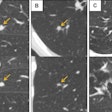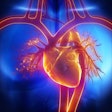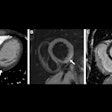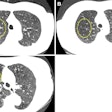Monday, December 1 | 8:30 a.m.-10:00 a.m. | RC218 | Room N226
A multispeaker course on treatment response for several kinds of cancer begins at 8:30 a.m. with a talk by Dr. Elena Korngold on a practical perspective of reporting treatment response. Arrive by 9:30 a.m. for the last talk in the series by Dr. Jeremy Erasmus from MD Anderson Cancer Center, who will focus on lung cancer.The second talk is by radiology luminary Dr. Hedvig Hricak, PhD, who will speak about assessing prostate cancer treatment, while the third is by Dr. Yves Menu, who will discuss abdominal malignancies.
In patients diagnosed with non small-cell lung cancer (NSCLC), tumor progression can occur in up to one-third after chemotherapy is initiated, Erasmus told AuntMinnie.com. Determining that treatment has failed is key to effective patient management and can assist in clinical decision-making regarding stopping the ineffective treatment and starting an alternative therapeutic approach.
Small differences in therapeutic response rates can affect trial outcomes, so it's important that the criteria used to make this determination are "meaningful and consistent," he explained. The antitumor effect of a treatment in patients with solid tumors can be determined by several means, including clinically or by surgical pathologic restaging, image-based measurements based on World Health Organization (WHO) criteria, or Response Evaluation Criteria in Solid Tumors (RECIST) guidelines to provide uniform criteria for reporting response.
"Many physicians do not have a comprehensive understanding of the applicability of RECIST 1.1, nor of the commonly encountered limitations," Erasmus wrote in an email to AuntMinnie.com. "The talk will review the status and limitations of anatomic and metabolic tumor response metrics in NSCLC including WHO criteria, RECIST 1.1, and PET Response Criteria in Solid Tumors, but with a focus on RECIST 1.1."
Cases will illustrate some of the limitations that radiologists and oncologists may encounter in their own practices. For example, cavitation is common when an angiogenesis inhibitor is combined with chemotherapy for NSCLC.
"How is response assessed when the cavitary target lesion does not change much in size?" Erasmus asked. "In this regard, Crabb et al have suggested a novel alternate method in which the longest diameter of any cavity is subtracted from the overall longest diameter of that lesion to measure target lesions."



















